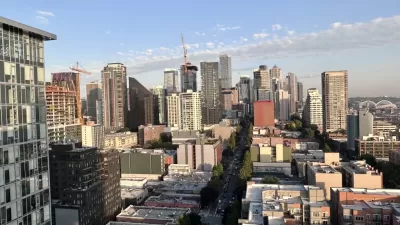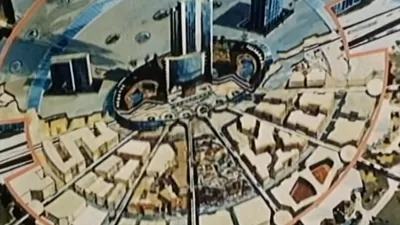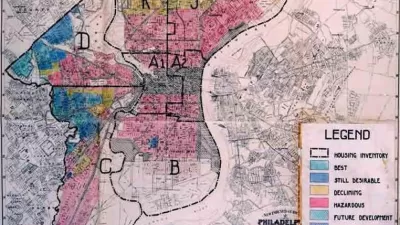This slideshow from Design Observer takes a look at New Deal-era utopian cities as they exist today.
Photographer Jason Reblando uses these cities to show how the ideals of utopian planning have fared over the years, and how these places are experienced by their inhabitants today.
"Observing the overcrowding and foul air of late 19th-century London slums, Howard proposed the Garden City concept, which would combine the social and economic opportunities of the city and the natural beauty of the country. The Greenbelt Town Program set out to be the most fully realized manifestation of Garden City principles in America.
In these photographs, my goal is not only to evoke the communal spirit for which the greenbelt architecture was designed but also to meditate on the urge to create a better society. I learned that many residents remain proud of the New Deal legacy; today the greenbelt towns enjoy common green spaces, and housing layouts encourage neighborly interaction. Yet I want my images to acknowledge somehow that utopia is a problematic goal. It is unsettling to realize that African-Americans helped to build Greenbelt, Maryland, but were not allowed to live in it; they were confined to a separate development, Langston Terrace. We might ask: Who defines utopia? Who has the opportunity to experience it? "
FULL STORY: New Deal Utopias

Study: Maui’s Plan to Convert Vacation Rentals to Long-Term Housing Could Cause Nearly $1 Billion Economic Loss
The plan would reduce visitor accommodation by 25,% resulting in 1,900 jobs lost.

North Texas Transit Leaders Tout Benefits of TOD for Growing Region
At a summit focused on transit-oriented development, policymakers discussed how North Texas’ expanded light rail system can serve as a tool for economic growth.

Using Old Oil and Gas Wells for Green Energy Storage
Penn State researchers have found that repurposing abandoned oil and gas wells for geothermal-assisted compressed-air energy storage can boost efficiency, reduce environmental risks, and support clean energy and job transitions.

Private Donations Propel Early Restoration of Palisades Playground
Los Angeles has secured over $1.3 million in private funding to restore the Pacific Palisades playground months ahead of schedule, creating a modern, accessible space that supports community healing after recent wildfires.

From Blight to Benefit: Early Results From California’s Equitable Cleanup Program
The Equitable Community Revitalization Grant (ECRG) program is reshaping brownfield redevelopment by prioritizing projects in low-income and environmental justice communities, emphasizing equity, transparency, and community benefits.

Planting Relief: Tackling Las Vegas Heat One Tree at a Time
Nevada Plants, a Las Vegas-based nonprofit, is combating the city’s extreme urban heat by giving away trees to residents in underserved neighborhoods, promoting shade, sustainability, and community health.
Urban Design for Planners 1: Software Tools
This six-course series explores essential urban design concepts using open source software and equips planners with the tools they need to participate fully in the urban design process.
Planning for Universal Design
Learn the tools for implementing Universal Design in planning regulations.
Ascent Environmental
Borough of Carlisle
Institute for Housing and Urban Development Studies (IHS)
City of Grandview
Harvard GSD Executive Education
Toledo-Lucas County Plan Commissions
Salt Lake City
NYU Wagner Graduate School of Public Service





























